“I’m going to the Florida Keys to catch a tarpon,” I told my friend who’s an experienced saltwater angler.
“You won’t catch one,” came his immediate reply. “I’ve tried several times and it’s really difficult to do. Besides, tarpon aren’t in the Keys in February.”
I’ve wanted to fish the Keys and catch a tarpon all of my life, and this bucket wish wasn’t going to be discouraged. The Keys are among the most sought after fishing “holes” in the nation and I’d quickly learn why.
If you have ever considered fishing the Keys, here’s my experience and why this fantastic vacation spot is incredibly easy to fish, even if you’ve never been there before.
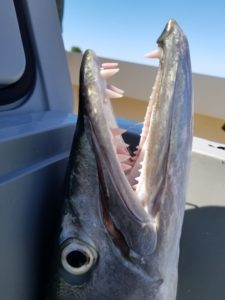
Sombrero Beach Coral Reef: Normally, listing a specific fishing spot is a no-no for the press because it can cause the spot to be overfished immediately. That’s not a problem in the Keys because there are so many fishing options. Almost every Key, large and small, has fishing that’s very accessible.
My friends Harry Guyer and Don Wilson joined me as we stopped at a bait shop on Marathon Key to buy live shrimp and some cut bait. Within a few minutes, we walked up to the reef and cast our lines. The tide had just turned and fish began to bite immediately.
I caught several small pinfish, which are excellent bait, both cut and live. I hooked a 6-inch pinfish in the back and tossed it onto the reef with a 1-ounce sinker to keep it in place. Almost immediately I had a run and ten minutes later battled a 10-pound shark onto the sand. This is not the tarpon I wanted, but quite a catch. After putting it back I caught another shark and lost one as it bit the hook from my line.
In about five hours of fishing from shore, we caught several species of fish including small barracuda. The next day we returned and Harry caught a 6-pound mutton snapper, a fish that was excellent to eat.
Tackle needs for surf fishing were very minimal. A 3-0 hook, a heavy sinker depending on the tide, and a heavy fluorocarbon leader were all we needed. Bait shops frequent the Keys or you can start with a small hook and bait and catch your own.
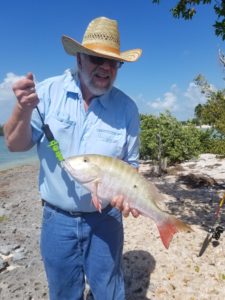
Bridge Fishing: Many bridges, 42 in all, have infrastructure specifically for fishing. Usually, they have lanes for traffic and parallel walkways for anglers. These bridges are low to the water and a fish caught can be pulled up, raised in a “bridge net” or fought to the end of the bridge and landed by hand.
Since the water is clear, you can usually see fish take your lure or bait. I had only been on the bridge a few minutes when I saw a 5-foot shark take my offering. Knowing that I did not have the tackle to fight a 100-pound fish, I held the drag and broke it off. In the next hour, we caught yellow snappers, small groupers, and a filefish.
Fishing an incoming tide, we noticed huge fish holding under the traffic portion of the bridge. A closer look showed they were large tarpon, many approaching 5 feet in length. Since there was no way to fish under the traffic lanes, we booked a charter the next morning.
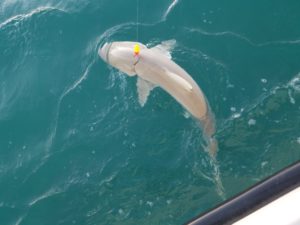
Small Boat Charters: The Florida Keys are close to the Gulf Stream where you can catch sailfish and the more exotic big game species. However, numerous captains offer small chargers for 2-4 people where you fish close to shores and in the myriad of bays and inlets that dot the Keys.
Despite our suggestions about fishing under the bridge, the captain wouldn’t fish there, insisting that tarpon couldn’t be landed due to the numerous bridge structures. Instead, he took us into nearby bays where we saw tarpon rolling, but couldn’t get one to bite. I caught a 42-inch barracuda and Don and Harry caught two sharks each. It was a great morning of fishing, yet we were disappointed that we didn’t catch a tarpon.
Tarpon are migratory fish and are rarely fished for in late February and early March. Normally, May and June are the best months. However, we were surprised to learn that most docks have resident tarpon under them. Another time, we will rent a small boat and angle for these resident fish.
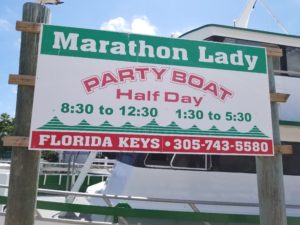
Head Boats: Most of the larger Keys have head boat fishing where you pay $50-75 to fish for half or a full day. They provide all of the bait and tackle, and even will clean your fish at trip’s end for a small fee. At these prices, the boat ride is almost worth the cost and it’s ideal for non-fishing spouses and youngsters.
I Will Return: Like many hunting and fishing trips, the first try is mostly an exploratory venture. I found the Keys to be the most fisher-friendly place I’ve visited with most residents and visitors very accommodating and helpful. You need a sturdy-but-simple tackle and there are many places you can fish for free. A Google search of the Keys in general or a specific island will turn up lots of possibilities. If you haven’t made vacation plans, a trip to Florida makes a wonderful combo of fishing and tourism activities.









![The Best Deer Camp Chili [VIDEO] Deer Chili Ingredients, Tomatoes, Chili Spices](/wp-content/uploads/2015/10/Deer-Chili-Deer-Camp-Recipe-218x150.jpg)








![How to Call Elk Early in the Season [VIDEO]](/wp-content/uploads/2016/08/byers003-218x150.jpg)

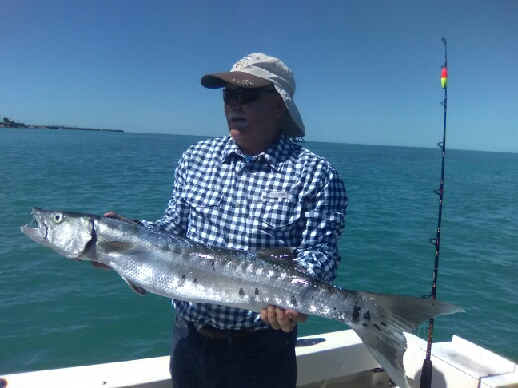


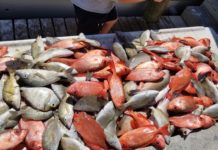


![Idiots Disturb Hunter: How Would You Have Handled It? [VIDEO]](/wp-content/uploads/2015/10/DSC00110-e1474487693878-100x70.jpg)
![Albino Buck Shocked to Shed His Antlers [VIDEO]](/wp-content/uploads/2015/10/AlbinoDeer-100x70.jpg)